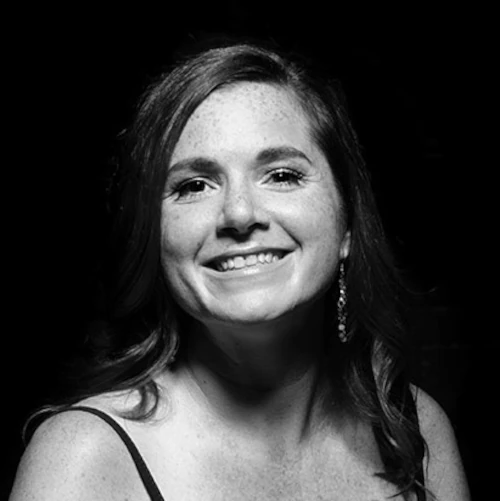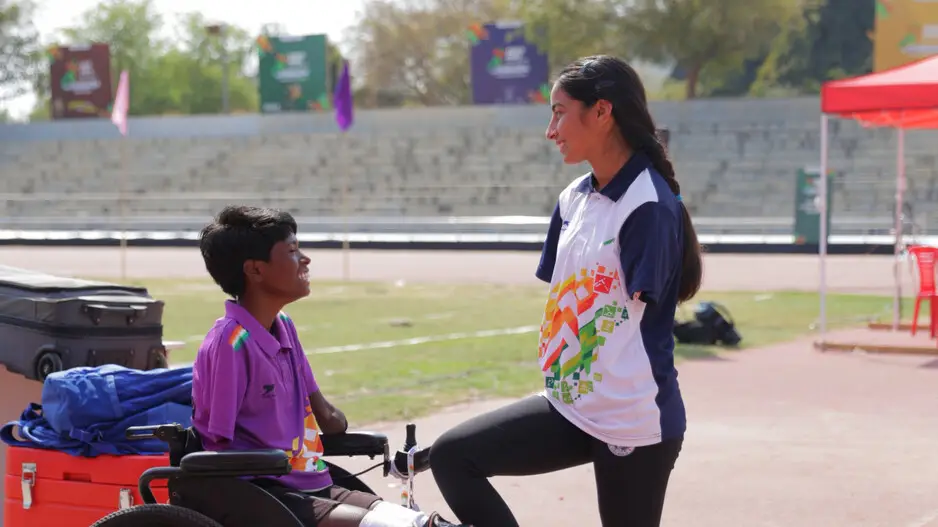When I was preparing to undergo below-knee amputation in 2019, I was fortunate to have an amazing mentor named Hoss. He was a close family friend who had been a below-the knee amputee for many years. From the time my amputation was recommended, he became the greatest support to me and my family. He taught me amputee tips and tricks, encouraged me to become involved with our community, and offered me countless pieces of sage wisdom.

One of the biggest things Hoss told me was this: My relationship with my prosthetist would be almost as significant as my relationship with my husband. He explained how, like a marriage, a successful partnership between amputee and prosthetist depends on open communication. He recommended that I meet with my prosthetist before my surgery, so I first walked into my prosthetist’s office a week before my amputation.
I didn’t want to be there because I didn’t want to become an amputee. I had been experiencing unbearable pain for a long time and was simply going through the motions. My assigned prosthetist, Mallory, entered the small room with a big, genuine smile. She was bubbly, talkative, optimistic, and compassionate. At most points in my life, I would also have been described by these adjectives. But not that day.
After my surgery, life took an incredible turn. It felt like the pain had literally been cut off, and I felt more like myself than I had in years. From this point on, Mallory and I formed a deep connection. She was a Grey’s Anatomy fan, and I loved talking with her about the series I had binged during my recovery time on the couch. I thought she was a great person for the marriage-type relationship Hoss had described. Her supportive, upbeat approach was a great fit for me as a new amputee.
A few months into our honeymoon period, Mallory shared her news that she was pregnant. I was happy for her, but I wasn’t looking forward to starting all over with another prosthetist at her clinic.
His name was Mike, and he was very different from Mallory. He was older, earnest, and more formal at first. He was definitely not a Grey’s Anatomy fan. It was an adjustment to go from Mallory’s bubbliness to Mike’s quieter demeanor. However, his gentle approach and style slowly grew on me over the next few months. He was a true expert with more than 30 years of experience. I began to trust and rely on him. Mike had a true passion for precision and helping his patients. He was not only skilled, but he was also highly respectful and empathic about each amputee’s experience.
I vividly remember one fitting appointment somewhat early in our relationship. As I walked back and forth down the narrow hallway, I kept looking back and asking Mike for his thoughts on how the adjustment was helping my gait. He finally said, in a gentle but direct way, “I can’t see how it’s working for you. You need to tell me how it feels.” I felt so frustrated—both with him, and with being an amputee. I didn’t know how my leg should feel. It hadn’t been a full year since my amputation, and I was still in the process of accepting my new life. Part of me felt upset with Mike because I wanted him to simply fix the issue I was having. I realized that I was displacing my apprehensive feelings onto Mike. As a new amputee, I didn’t trust myself to know what felt right.
With Mike’s patient guidance, I was able to overcome this. It took time to gain confidence and trust what I was feeling in my limb. While every amputee’s experience is different, I often feel a disconnect between the messages my leg is sending me and my ability to articulate those sensations. My nerves work differently, and sometimes the feelings seem dulled, as if it takes twice as long for my brain to interpret what’s happening in my body. I’ve become more patient with myself as I’ve adapted to this.
As I reflected later about this moment of frustration in the clinic, I realized that it was a pivotal, transformative point along my journey. Mike was teaching me the importance of self-advocacy—not only as an amputee, but also as a human being. I have spent over 20 years as a school counselor and social worker, and in that role I have become skilled at advocating for the teenagers I work with. Mike made me realize that I needed to start teaching my students how to self-advocate, instead of only advocating for them. That is a skill that will benefit them long after they graduate from high school.
“Progress before setbacks” is a mantra I’ve learned from Mike, and I often use it as I assess my level of functioning. I’m very active and love taking walks, practicing yoga, and playing tennis. In the beginning of my amputee journey, I would make appointments to see Mike only when my pain became moderate or severe. When I’d see him, I would explain that the pain had started a few weeks prior, and I’d stopped taking walks and exercising in the meantime. He told me, “Call for an appointment right when this happens instead of waiting for it to get worse.” He encouraged me to become more proactive when I couldn’t engage in activities that I wanted to do. He didn’t want setbacks to stall my progress. I learned that I didn’t have to settle for living less actively than I wanted to. By calling him as soon as I encountered an issue, I’d more quickly get back on track with my fitness, rather than regressing and having to build back up.
Another invaluable lesson Mike has taught me is about the importance of taking my time with things in life. As a biped, I used to wake up with just enough time to rush out the door in the morning and barely get to work on time. One day, after an adjustment, Mike observed me hastily rolling up my liner and gently chastised me. He showed me how to put my liner and sleeve on with care, so my leg would be on securely. This would help to eliminate improper fit issues. I learned that it was a bad habit to try to throw on my leg and go. I needed to take my time putting on my prosthesis. Mike taught me about the value of being mindful and treating myself with great care.
One morning I almost fell while rushing to get my leg ready, and I realized I needed to give myself more time so I didn’t have to rush. Now I start my day at 5:00 am, 45 minutes earlier than I used to. The first thing I do when I sit up in bed is put on my leg. It used to feel like a hassle, a chore I didn’t want to do. Now it’s the first step of how I begin my day mindfully. After carefully putting my leg on, I practice yoga and then read a book with my breakfast. I no longer rush to get out the door. It’s a healthy habit physically, because I walk with care and reduce my fall risk. It’s also a healthy mental habit, because I begin the day with positive outlets that help me maintain a calm balance throughout my day.
I’ve been fortunate to work with two great prosthetists. The first helped me make the emotional adjustment to limb loss. My second taught me invaluable lessons about self-care, self-confidence and self-advocacy. Those are both marks of a good marriage in which both partners help each other learn, grow, and improve their lives.
Eileen Garney is a high school counselor in Harrisburg, PA. She is also a yoga instructor and a certified peer visitor through the Amputee Coalition.











-1.png)

.png)
